4 Things We’ve Learned in 4 Weeks of Beekeeping
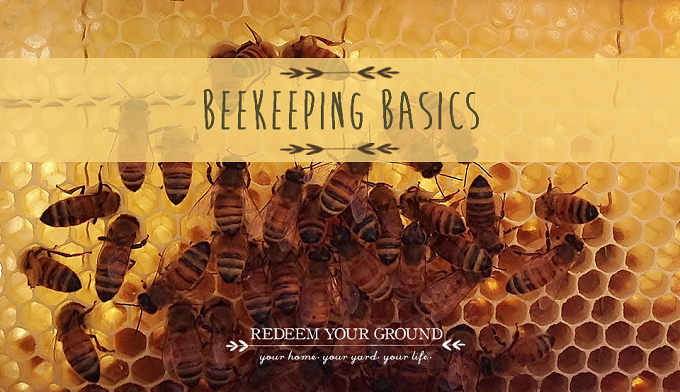
I met Micah a little over 2 years ago now…when we were just starting out on our RYG journey. Micah was part of the awesome team at Proof Branding that helped us come up with the RYG brand and develop our website and blog. And since then Micah, has become both a friend and a fellow ground redeemer. So today…she was kind enough to share some of what she’s learned as a beginner at raising bees…in hopes of demystifying for us what beekeeping is all about. [Thanks Micah!]
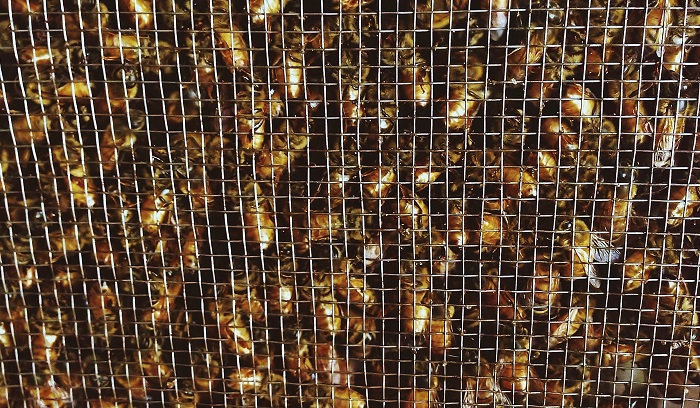
![]()
Last year my husband and I planted our first garden in our backyard. We bypassed raised beds and went straight into the tilled ground and were completely floored by the yield. Some vegetables didn’t do as great as we had hoped, but the ones that flourished really flourished. As with all things, you learn a lot from your first experience and this year we wanted to step up our game.
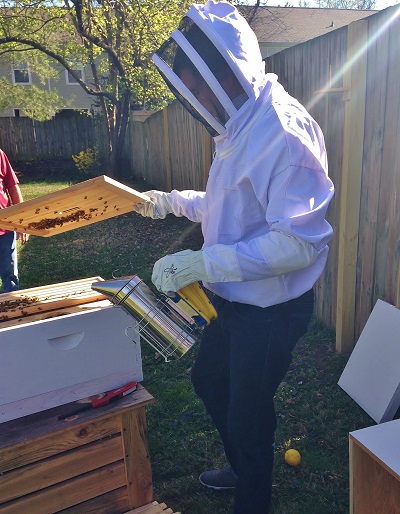 When we pulled up our plants at the end of last season, Adam (the aforementioned husband), went through the tedious process of extracting and saving all the seeds, so as we planned this year’s garden, we already knew what plants we’d have and what to expect from them. But we didn’t stop there. In order to really amp up our production, we also decided to dive into the world of bee ownership, anticipating that the pollination help from our honeybees would really help our garden excel. Plus, at the end of the season we’d have all this honey to show for it. How can you go wrong?!
When we pulled up our plants at the end of last season, Adam (the aforementioned husband), went through the tedious process of extracting and saving all the seeds, so as we planned this year’s garden, we already knew what plants we’d have and what to expect from them. But we didn’t stop there. In order to really amp up our production, we also decided to dive into the world of bee ownership, anticipating that the pollination help from our honeybees would really help our garden excel. Plus, at the end of the season we’d have all this honey to show for it. How can you go wrong?!
Well, after four weeks, this post is dedicated to the four major things we’ve learned on this adventure thus far.
1.) When you sign up for bees, you sign up for lots of bees.
Four weeks ago, Adam and my father-in-law, Dwight, drove a few hours away to pick up our bees—10,000 of them, to be exact. Over the coming weeks, the queen will lay an unbelievable number of eggs, and when it’s all said and done, the hive should contain somewhere near 60,000 of these little guys. This is usually where people write us off as completely crazy and consider turning us over to child protective services for subjecting our eight month old to this undoubtedly dangerous situation. This brings me to my second point.
2.) Backyard bees sound much more intimidating than they actually are.
I get the concern, because we live on a ¼ acre with neighbors on all sides, and 60,000 bees in the backyard really does sound crazy (remember that I heard it for the first time once, too). BUT—once you understand some fundamental things about how bee colonies work, it becomes much less intimidating.
First, a few thousand of your bees are drones. They stick close to the hive and buzz and cause people to flinch like a normal bee would, but their purpose is exclusively to mate with the queen. So exclusive, in fact, that they don’t even have stingers. They literally can’t hurt anyone.
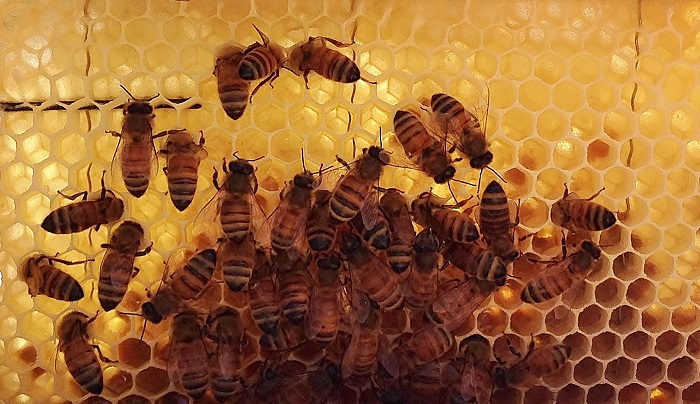
Second, of the tens of thousands of worker bees who pollinate flowers and make honey, at least half are in the hive at any given time. So on that point alone, your “threat level” is down significantly.
Third, when a bee is out collecting pollen, they’ll go anywhere within a two-mile radius of the hive. When you consider the size of a bee and the reality of that distance, they end up really getting diluted in the area.
And fourth, a bee will fly as high as its highest obstacle, and then stay at that height until it comes down for a flower. In our case, we have an 8-foot fence around our backyard, so the bees will leave the hive, fly up eight feet, and maintain their flight well above our heads.
In the four weeks since we got these guys, I’ve literally not swatted at one. Outside of being able to see them around the hive in the back of the yard, we really don’t notice they’re there.
3.) Beekeeping doesn’t require much from you.
The weekend we got the bees, Adam and Dwight spent somewhere around 20 minutes getting the bees into the hive we had purchased, and since then have spent what I’d estimate at a combined hour of time tending to them up until now. Basically, this combined hour has involved:
-
- Checking to ensure they have food (before they really ramp up their honey production, the hive doesn’t have enough to eat, so we feed them sugar water).
- Checking their progress on the frames to see if we need to add more space.
- Making sure there’s nothing alarming going on—like a ton of dead bees inside—that would indicate a larger problem, like disease.
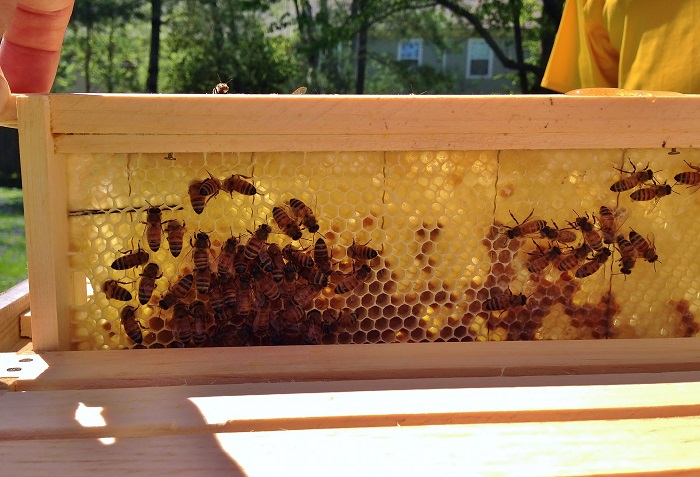
Near the end of the summer, harvesting the honey and winterizing the hive will require a bit more time and attention (although still not a ton), but since we’re talking about the first four weeks here, they’re pretty “plug and play.”
On a related note, they don’t require much space either. The external dimension of the hive is a 1.5’x1.5’, and that’s it. We keep them about 2/3 of the way back in our yard, so it’s small and totally out-of-the-way.
4.) The apiarist community is really awesome.
We had plenty of questions when we decided to give this a go. As it happens, there are local chapters of beekeeper associations in most places, and these folks are incredibly friendly and happy to share their knowledge with beginners. Dwight attended a few sessions, and also went to a weekend class to really get a handle on the basics.
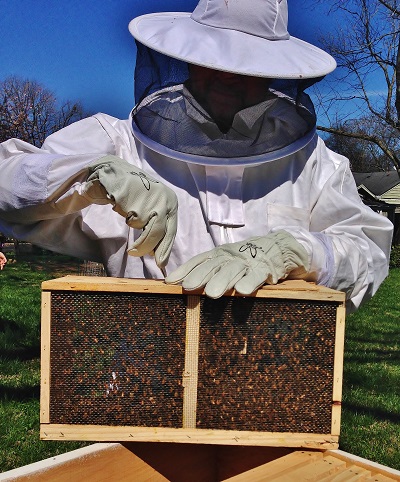 As you may or may not know, bee populations are in serious decline, which poses a significant danger to global agriculture. We’re still new at it, but we’re really excited to be joining with a community of beekeepers across the world who are working to combat the problem. If the idea of owning bees is at all compelling to you, I’d absolutely encourage you to explore it and join us!
As you may or may not know, bee populations are in serious decline, which poses a significant danger to global agriculture. We’re still new at it, but we’re really excited to be joining with a community of beekeepers across the world who are working to combat the problem. If the idea of owning bees is at all compelling to you, I’d absolutely encourage you to explore it and join us!
Or, if flying creatures completely terrify you, despite my promise that they’re really not bad at all, something as simple as keeping bees in mind while you redeem your ground can really help. Part of the reason for the decline in bee population is malnutrition and pesticides, so be intentional about choosing bee-friendly flowers and vegetable plants, and be responsible with what you use to help them grow.
We already know this is going to be a fun adventure for us, and just the potential of a honey harvest has made us all kinds of new friends, so we’re calling that a victory, too.
![]()
[Thanks again Micah. This is such great beginner beekeeping goodie!]
Britt and I have thought about adding beekeeping to our ground-redeeming efforts at home. And now…after learning what Micah has shared, we may just have to take the plunge. Maybe you will too. And besides, wouldn’t it be cool to add “apiarist” to the end of your name?
Lastly…if you want to bee inspired even more, take a look at this cool video that Joe Lamp’l from Growing a Greener World® recently shared with me. As Micah referenced, bee populations are at a critically low level…and this video shows one way Cascadian Farm® has approached helping bring back the bees…by planting 1 million wildflowers in a pretty amazing way. Take a look.
Take care all,

You may also enjoy these posts from RYG ...
If you're not already subscribed to RYG and want to get periodic updates, links to new posts & other ground redeeming info ... just enter your email address below. Easy as that!

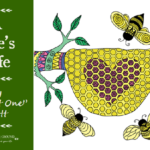
![The Redeem Your Ground Story on Growing a Greener World [& Bloopers]](https://redeemyourground.com/wp-content/uploads/2016/07/RYG-GGWtv-__-Redeem-Your-Ground-150x150.jpg)
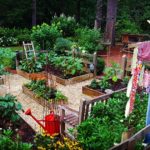

![[EXCITING NEWS] RYG Is Joining the “Growing a Greener World” Team](https://redeemyourground.com/wp-content/uploads/2015/02/Growing-a-Greener-World-Redeem-Your-Ground1-150x150.png)
Wow! That brought tears to my eyes! What a beautiful inspiration and endeavor! The video was so very well done, just loved it! The myriad of ways that we can redeem our ground and be Eco-friendly and responsible are so broad and of such immense importance! Thanks for this great encouragement and marvelous ideas! If we don’t choose to be beekeepers, we can at the very least plant wildflowers to help them!
Thanks Brenda…and you are so right! And yes…I agree too that Cascadian Farm’s wildflower project and video are truly amazing. There’s so much we can do to beautifully help our environment…and ever little bit counts…clearly, we all don’t need to have access to a crop-duster to plant some wildflowers around our home! That will help our neighboring bees thrive, while making our outdoor spaces that much more beautiful! Thanks again for your comments. Take care, D.